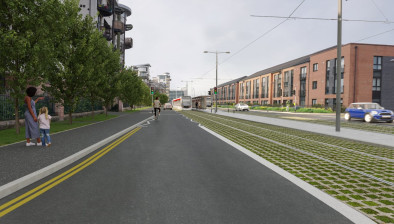Business case revealed for extending tram to Newhaven

The Outline Business Case (OBC) for taking Edinburgh’s tram service down to Leith and Newhaven has been published by the local authority.
The comprehensive document sets out the findings and recommendations resulting from a 20-month programme of very detailed work assessing the benefits, impact and likely timescales and cost of completing the remaining 4.6km of tramline 1A.
The OBC has been available for councillors to scrutinise, with officers and an independent advisor on hand to provide further information or clarify points.
A report accompanying the OBC will now be considered at a special meeting of the City of Edinburgh Council’s transport and environment committee on September 4, before going to full council on September 21.
The report seeks authority to commence a procurement exercise to identify a potential contractor for the project, with a final decision on whether to go ahead with taking the tram to Newhaven, and with which contractor, to follow in autumn 2018.

Council leader Adam McVey said: “Edinburgh is growing faster than any other city in Scotland and our current road network and public transport provision simply aren’t sustainable given the number of new residents we’re expecting to welcome here over the next two decades.
“Rather than exacerbating traffic problems on our already congested roads, trams allow far greater numbers of people to travel, while creating employment during construction, boosting development along the route and connecting people to centres of employment, leisure and retail.”
Transport convener Councillor Lesley Macinnes added: “Given the experience of the last tram project, we’re acutely aware of the need to scrutinise this business case as rigorously as we possibly can – residents deserve nothing less. We won’t take any decision on completing the line to Newhaven until we are 100% confident that the project can be delivered, financed and managed effectively.
“Councillors from all parties have been taking up the opportunity to fully examine the business case over the past weeks and will use this special meeting of the Transport and Environment Committee to quiz officers further on the detail and make a recommendation on whether to progress to the next stage.”
Key points included in OBC:
Rapid population and economic growth
Costs & benefits
Construction work to take three years
Carefully planned traffic management
Support for businesses
Lessons learned























